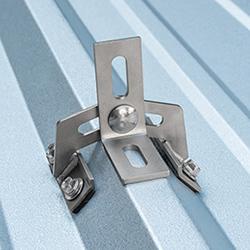New Opportunities for Small Scale Concentrating Solar Poawer
Sopogy pioneered MicroCSP systems are used on rooftops and small farms bringing effective and economical CSP solutions to new market spaces. Focusing on 1MW - 20MW, Sopogy's solutions are disrupting existing markets and helping customers solve their energy problems.
New Opportunities for CSP
by
Darren Kimura, John Rei, and James Maskrey
Sopogy, Inc.
The energy bills now being considered by Congress offer both challenges and opportunities for CSP. Some of the opportunities are obvious, particularly the proposed extension of renewable energy tax credits and provision of new research funds to further commercial applications of CSP. Less obvious, but potentially no less significant for CSP, is the potential benefit of a provision to establish a research and development program on solar air conditioning.
The main challenge, according to an analysis of the legislation conducted by CRA International for the American Petroleum Institute, is that the net impact of the bills on the U.S. economy would be a 4% drop in gross domestic product and a loss of some five million jobs by 2030, compared to levels that would otherwise be expected. The main assumption underlying these projections is that a shift to renewable resources will inevitably raise the cost of energy so much that it will significantly hurt the purchasing power of the average American.
Clearly a portfolio approach is needed that creates incentives for technologies that address a range of renewable energy needs. These needs extend across sectors and include development of biofuels for transportation, large central-station solar generation, and smaller, on-site generation for consumers. In addition, a broader energy portfolio can provide significant opportunities for job growth.
What's missing from both the proposed legislation and the CRA analysis is the opportunity to use CSP in distributed energy applications that could directly displace the use of fossil fuels in many thermal energy applications, as well as generate electricity for customers at costs competitive with retail utility rates. Until recently, CSP was considered to be cost-effective only for utility-scale power generating facilities. Now, however, a new generation of CSP technology—dubbed MicroCSP' —has been introduced that can provide thermal energy and/or electricity for a wide variety of small- to mid-sized applications.
Pioneered by Sopogy, Inc., this highly modular technology is particularly suitable for offsetting natural gas in agricultural and industrial applications such as crop drying, food processing, industrial process heat, and absorption chiller air conditioning in commercial buildings. MicroCSP could also be used by the electric power industry to provide supplemental heat to the makeup water in power plants' bottoming cycle, thus increasing the plant's overall efficiency and offsetting its use of natural gas.
Full commercialization of this technology, however, will require continuing financial incentives. Specifically, we believe that the solar investment tax credit needs to be extended for at least five years, and preferably eight. The main justification for these extensions is that large solar projects have long project development times, including challenges such as siting, permitting, environmental impact studies, etc. Investors thus need a long enough planning horizon to guarantee that these projects can be completed in time to claim the tax credits.
Incentives to build demonstration projects at commercial scale in key applications are also needed. Sopogy has already identified some particularly promising demonstration opportunities in California. We expect, for example, that a 150 kW Sopogy pilot plant, can prove the feasibility of using solar thermal energy to significantly reduce a customer's dependence on grid-based electricity and natural gas.
The time has come to take a much broader view of CSP. In particular, new opportunities include the use of small, non-utility CSP installations that benefit individual customers directly. But commercialization will require significant financial incentives, particularly in the form of extended tax credits.
Featured Product

QuickBOLT - QB RibRider: Flexible, Fast, and Secure Solar Mounting for Metal Roofs
The QB RibRiderâ„¢ is an adjustable and easy-to-place mount for exposed fastener and trapezoidal ribbed roofs, combining versatility with robust construction. It features a 90/180 mounting combo with 75mm butyl pads on the base for superior weatherproofing. The RibRider is designed to fit most exposed fastener, trapezoidal, and ribbed metal roof profiles. This mount features stainless steel roof brackets and comes with four #14 x 1-1/4" hex washer self-drilling screws, ensuring a secure attachment to the roof.
